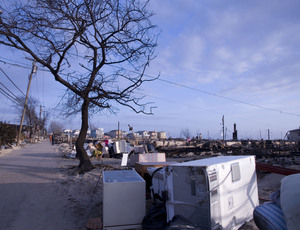There were 224,878 men and women working in the New York City’s construction industry in 2011, about the same as in 2010, according to a recent New York Building Congress (NYBC) study.

To increase the number of workers in the city, it’s a “simple prescription,” says Lou Coletti, president and CEO of Building Trades Employers’ Association. “The only thing that is going to create more jobs is more projects,” Coletti says. "We hear that projects are moving forward, but they’re not in the ground yet."
Apart from the 166,632 of those who live within the city limits, about 10% live in Long Island, 10% live in New Jersey, 6% live in the Mid Hudson Valley, and less than 1% live in Connecticut and the rest of New York State, says the study, which is based on analysis of the U.S. Census Bureau’s 2011 American Community Survey. Some 51% of the overall workforce resides in Queens (64,225 workers) and Brooklyn (49,582); 23,283 workers reside in the Bronx and 14,251 reside in Manhattan.
In the wake of Superstorm Sandy, most of those rebuilding the city's hardest-hit areas are likely to be New Yorkers themselves. “One purely practical effect of the storm and its aftermath is more construction-related jobs for New Yorkers,” Richard Anderson, president of NYBC, said in a statement that calls these workers the "driving force" behind reconstruction efforts.
Coletti says, however, that the Sandy rebuilding efforts create a “false signal.” With the city's newly launched NYC Rapid Repairs program, a significant number of new jobs have been created, "but it’s for a very narrow scope of work and only shows a temporary spike in the workforce," Coletti says. When the program has ended, "we’re hopeful that other projects can get on line,” he says. "But we still haven’t seen that push that would create those new jobs."
The NYBC study, which is based on self-reported personal responses from individuals to the Census Bureau and incorporates both union and non-union labor, also shows that white non-Hispanic men and women accounted for 43% of the total workforce. Hispanics made up 36%; Black Non-Hispanics made up 14%; Asian workers made up 7%; and less than 1% identified themselves as multi-racial.

Post a comment to this article
Report Abusive Comment